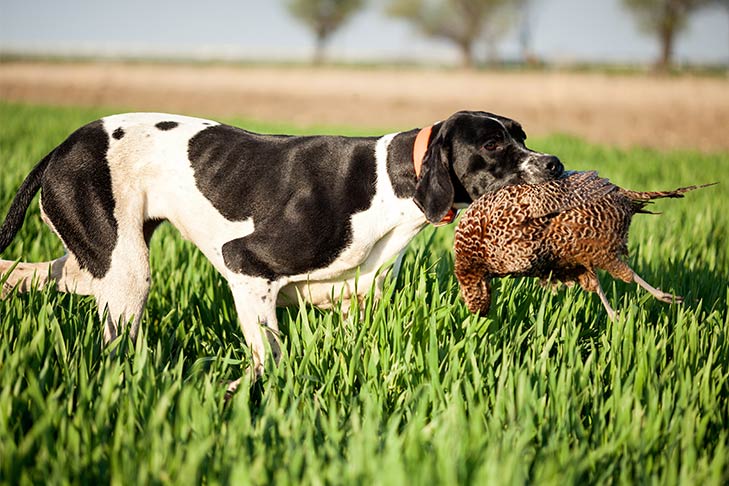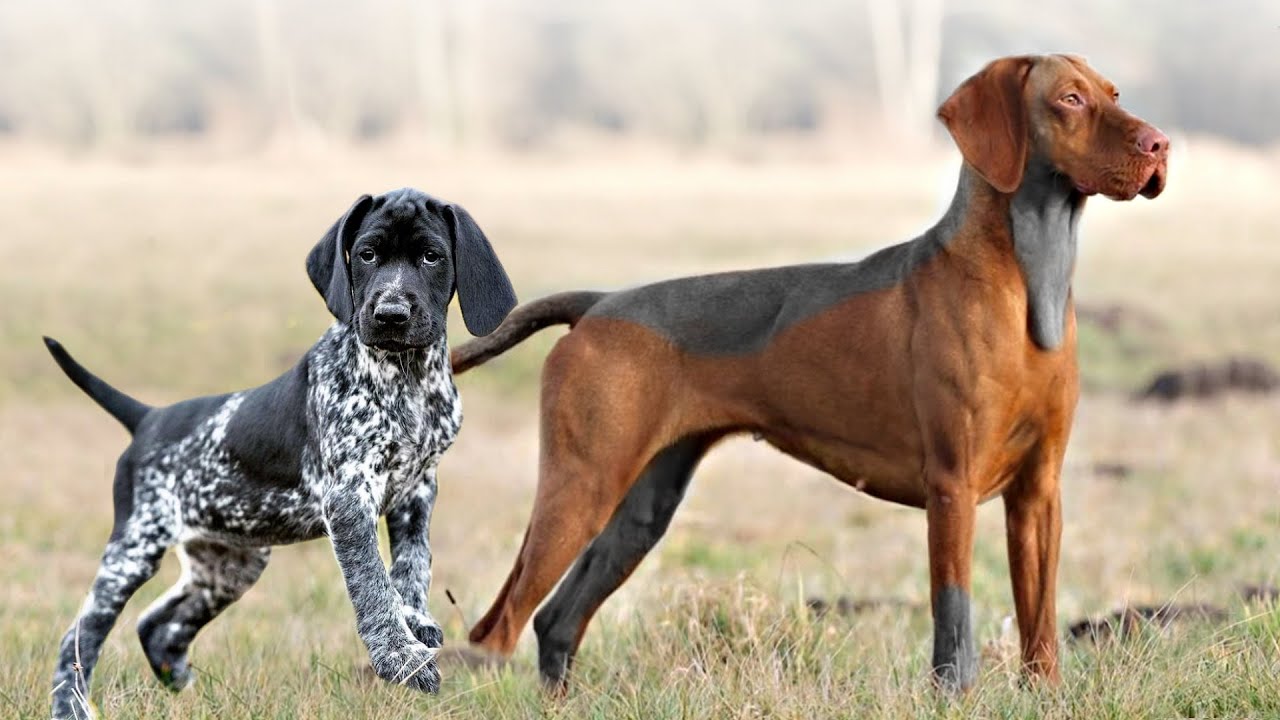The Pointer often called the English Pointer, is a medium to the large-sized breed of dog, developed in England as a gun dog. It is one of several pointing breeds.
Coat and colour
A lemon and white Pointer.
The coat of a Pointer is short, dense, smooth with a sheen. They are generally white with either liver, lemon, orange or black markings. Although pointers may have solid colouring in any of these hues, most Pointers are primarily white with somebody markings.
Lemon and white dogs have flesh-coloured noses, while Pointers with orange, liver or black markings have dark (black or very dark brown) nose pigmentation.
History

The history of the Pointer, like many breeds, is a reasonably debatable topic. Records of Pointers in England trace as far back as 1650. According to one source, the Pointer came to be in the 16th and 17th centuries, when pointing breeds, including the Old Spanish and Portuguese pointer, were brought from the European mainland to England.
Through both history and anatomical evaluation, at least four breeds appear to have been instrumental in Pointer crosses Greyhounds, Foxhounds, Bloodhounds, and Bull Terriers. Each of these was established breeds with unique qualities the Pointer could use to do its job.
Pointers were brought to the United States, where the breed flourished in the abundant open hunting land. At that time (the late 1800s), the Setter was considered to be the bird-hunting dog and pointers were not even permitted to compete in field trials with setters. Around 1910, however, the Pointer began to beat the Setter at its own game. The Pointer has dominated the pointing breed field trials since then.
One of the earliest dogs to exert influence on the breed in the US was a dog imported from England in 1876 – “Sensation”. He is well known as the dog on the emblem of the Westminster Kennel Club.
One modern American kennel, established in 1936, and known for breeding large quantities of Pointers, Elhew Kennels produced a popular and successful line of gun dogs. Elhew pointers were well-known competitors at field trials for several decades.
In the southern United States, where the dog is so dominant it is often simply referred to as the “bird dog,” Pointers are found in abundance. The bobwhite quail is the primary game bird there and is considered classic English Pointer game, as the bobwhite will hold well for a pointing dog. Pointers also work game birds such as the pheasant, grouse, and woodcock with success.
Temperament
Pointers are even-tempered, congenial dogs, and despite their large size, make good house pets so long as they get sufficient exercise due to their extremely high energy levels. Pointers are intelligent, affectionate, clean and intensely loyal. Their aggression level is very low to non-existent and they normally happily coexist with other dogs and cats. They are not typically territorial but can be reserved with strangers. They are very good with children and fit in well with family life generally. Pups can be somewhat boisterous, and their long legs make them appear somewhat clumsy in a charming way as they grow. They will bark at suspicious noises but are not a great watchdog breed. While Pointers were bred to be hunting dogs, they are perfectly content to be given adequate exercise by other means. Since they are a galloping breed, regular exercise is important for them, as it is for all sporting breeds. A good-sized, securely fenced yard is a must to keep a Pointer safe since they are bred to hunt and pursue scents a good distance from their person. Pointers are habitual “couch potatoes” who enjoy relaxing on the family’s chairs, sofas and beds. This is a natural part of their desire to feel part of the pack.
